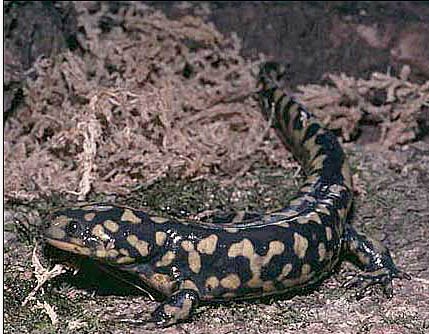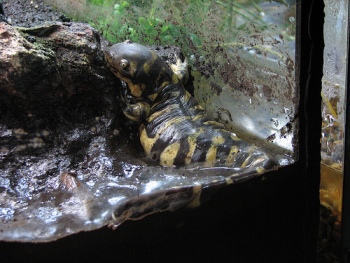Facts
 There are several astounding facts about the tiger salamander.
The first is that tiger salamander numbers declined dramatically 1993 and thenremained
stable. This decline in population could have been the result of a
pesticide called Atrazine which is used primarily to control weeds on corn, sugar cane and residential lawn. Scientists have
noticed that amphibians exposed to this herbicide developed
deformed genitalia and softer voice boxes making mating and
calls and reproduction impossible. Tiger salamanders living in
areas exposed to atrazine have an increase to the Ambystoma
tigrinum virus causing internal hemorrhaging and death.
There are several astounding facts about the tiger salamander.
The first is that tiger salamander numbers declined dramatically 1993 and thenremained
stable. This decline in population could have been the result of a
pesticide called Atrazine which is used primarily to control weeds on corn, sugar cane and residential lawn. Scientists have
noticed that amphibians exposed to this herbicide developed
deformed genitalia and softer voice boxes making mating and
calls and reproduction impossible. Tiger salamanders living in
areas exposed to atrazine have an increase to the Ambystoma
tigrinum virus causing internal hemorrhaging and death.
Cannibal Morphs
Some larvae may become cannibalistic, and are termed "cannibal morphs." Compared to other larvae, these have larger heads, bigger mouths, and more well-developed teeth. This appears to occur when ponds start to dry up or other food becomes scarce. The cannibal morph larvae eat other tiger salamander larvae, grow faster, and metamorphose into adults earlier. An adult cannibal morph will retain the larger head and bigger mouth of the larvae.
Why I Picked This Organism?
 I picked this organism because these unique burrows they
create where they live underground for most of their
lives. In addition, I found the cannibalism of tiger
salamanders as a response to a lack of food interesting.
Lastly, I picked the tiger salamander because they make
lovely house pets and even respond to stimulus, climbing
up the cage when you approach.
I picked this organism because these unique burrows they
create where they live underground for most of their
lives. In addition, I found the cannibalism of tiger
salamanders as a response to a lack of food interesting.
Lastly, I picked the tiger salamander because they make
lovely house pets and even respond to stimulus, climbing
up the cage when you approach.
To view a list of my references click here.
To go back and learn about the interactions of the tiger salamander with other organisms click here .
To return to the home page click here.